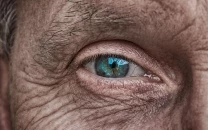Pakistan 12th largest beneficiary of international charities worldwide, discloses OECD
Report identifies India as top recipient of philanthropic giving, BMFG biggest private donor in the world

PHOTO COURTESY: CDC
According to the study by the intergovernmental organisation based in Paris, corporate donations constitute a large volume of philanthropic activity in the country, and have increased from USD 4.5 million to USD 56.4 million over the last 15 years.
The Bill and Melinda Gates Foundation, owned by Microsoft founder Bill Gates and his wife Melinda Gates, is the biggest philanthropic donor to the nation. The BMFG contributes more than three-quarters of all the private humanitarian aid flowing into Pakistan from abroad.
Pakistan one of the most charitable nations in the world, reveals new study
Interestingly, BMFG also donates more money to charity in Pakistan than the combined official development assistance to the South Asian nation by developed countries all over the world.
According to OECD, BMFG mainly focuses on health-related philanthropic giving, striving to battle infectious disease, reproductive health and family planning, as well as nutrition and basic health care.
In Pakistan, USD 210 million of the total private humanitarian aid is concentrated in the health sector, and the country is the 4th largest recipient of health aid in the world. Here too, the private contributions of BMFG dwarf the donations from world nations.
Global trends
The study by OECD has focused on outlining the role private charitable foundations play in the world, and their contributions towards advancing the Sustainable Development Goals that United Nations member states agreed to implement back in 2015.
The report also aims to answer some preconceived notions about the volume, nature and potential of private donors to engage successfully in developing countries, say authors of the research.
The research notes that philanthropic flows of money still lack way behind in volume as compared to official development assistance by members of the development assistance committee at OECD.
ODA is a term used by OECD to track aid, and represents the amount of money developed nations pour into the developing world to improve social infrastructure, health, education, agriculture and governance and civil society sectors.
Seized, but not ceased: Banned charities pose challenge for Pakistan
From 2013-2015, private donors gave USD 24 billion to charity, as compared to USD 462 billion in ODA outflows during the same period. However, the report notes that private foundations are now emerging as key players in some aid sectors such as global health and education. To stress this point, figures accompanying the finding indicate that private donors donated USD 11 billion for the health sector in the three year period, third behind the United States and a global fund for battling diseases.
Another worrying trend highlighted in the report reveals that the sources of philanthropic giving for developing countries are highly concentrated. For example, according to OECD data, BMFG contributes almost 50 per cent of all private charitable donations to developing countries in the world.
Contrary to popular opinion, OECD research has concluded that private donor prefer to contribute money for stable middle-income countries through established international partners. Figures show that more than half of the USD 24 billion in private assistance for developing nations goes to middle-income countries like India, China, Mexico and South Africa, among others. Compared to this, only 28 per cent of the 24 billion is given to least developed countries.
Some of this may be explained by the tendency of domestic charities to play a part in national philanthropic flows of a nation, as evidenced by data which shows that almost 83 per cent of all charity money in Turkey is contributed by domestic foundations. The figure stands at 35 per cent for China, and almost 60 per cent in Mexico.
Biggest donors in the world
Three-quarters of all private aid to developing nations is courtesy of foundations workings in the United States, the OECD report has stated. US-based charities gave USD 17.6 billion out of a global total of USD 24 billion to those in need during 2013-2015, owing largely to generous donations by the Bill and Melinda Gates Foundation.
Foundations in the United Kingdom, Netherlands, Switzerland and Canada also give a significant percentage of aid to developing countries, and contributed a combined 16 per cent of private donations between the specified period.
Authorities order George Soros foundation, other aid groups to close
Of the 143 private foundations included in the survey, the top 20 constitute 81 per cent of the total contributions. European and North American foundations lead in this regard, says OECD.
Largest recipients of charity
The findings of the survey reveal that Africa is the most frequented destination of philanthropic donations, accounting for a 28 per cent share in total private contributions.
India is identified as the largest beneficiary of both private charitable donations and official development assistance by the OECD. It received almost USD 1.6 billion of aid during 2013-2015, which is 7 per cent of the total aid distributed by private foundations worldwide.
Official Development Assistance
A press release issued by the Paris based group has also shed light on the trends in the overall development aid member countries contributed to developing nations.
In 2017, net official development assistance by members of the OECD Development Assistance Committee was USD 146.6 billion, representing a slight fall of 0.6 per cent in real terms, the release underlined.
OECD stated that the United States continued to be the largest DAC donor of net ODA (USD 35.3 billion), followed by Germany (USD 24.7 billion), the United Kingdom (USD 17.9 billion), Japan (USD 11.5 billion) and France (USD 11.4 billion).
The group also highlighted how some countries exceeded the United Nations’ ODA as a percentage of Gross National Income target of 0.7%, like Denmark (0.72%), Luxembourg (1.00%), Norway (0.99%), Sweden (1.01%) and the United Kingdom (0.70%).
Many providers beyond the DAC have long traditions of development cooperation, said OECD, noting that amongst these, according to the preliminary figures for 2017 reported to the OECD, both Turkey and the United Arab Emirates exceeded the 0.7% ODA/GNI target, with 0.95% and 1.31% respectively.


















COMMENTS
Comments are moderated and generally will be posted if they are on-topic and not abusive.
For more information, please see our Comments FAQ